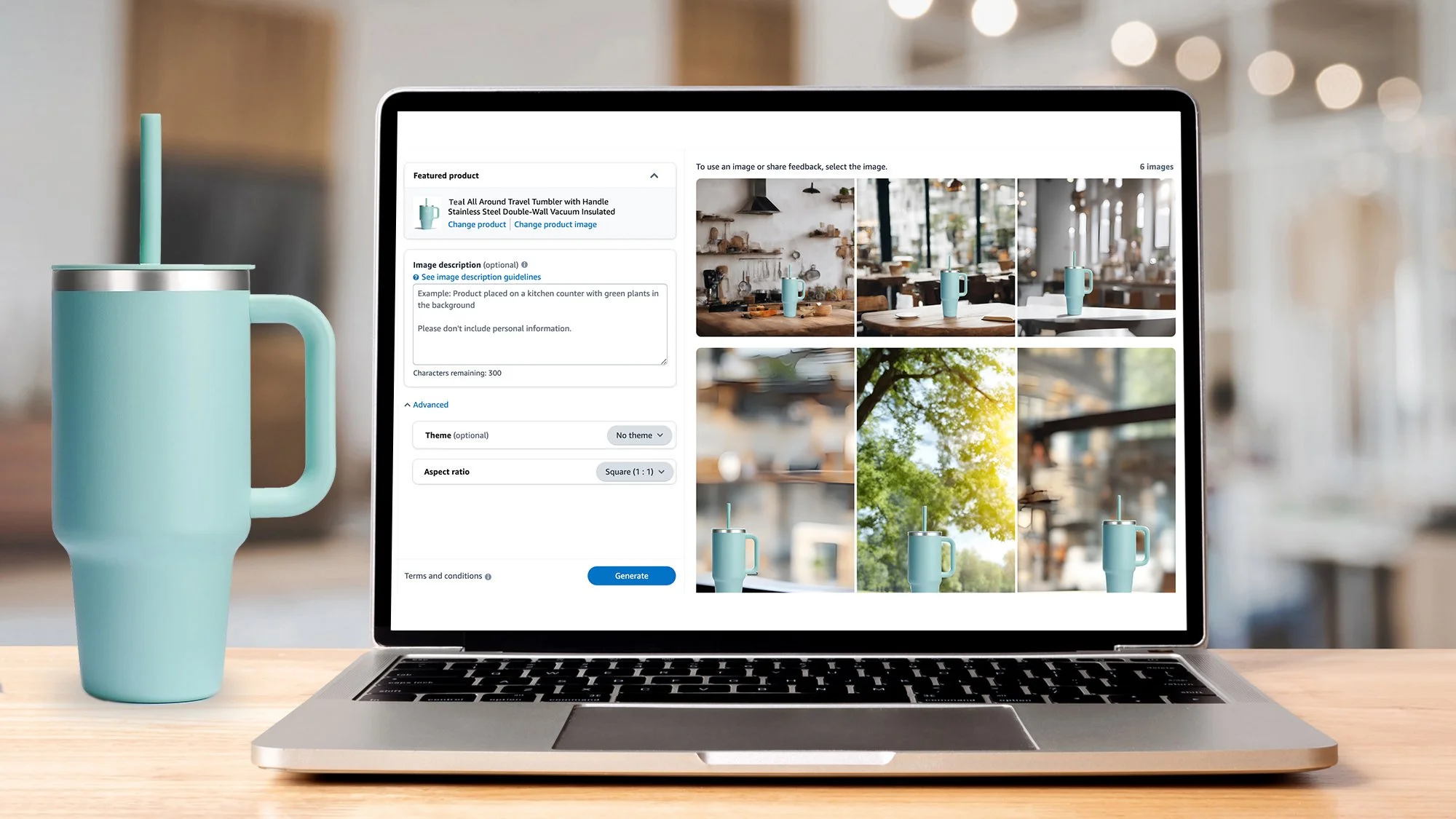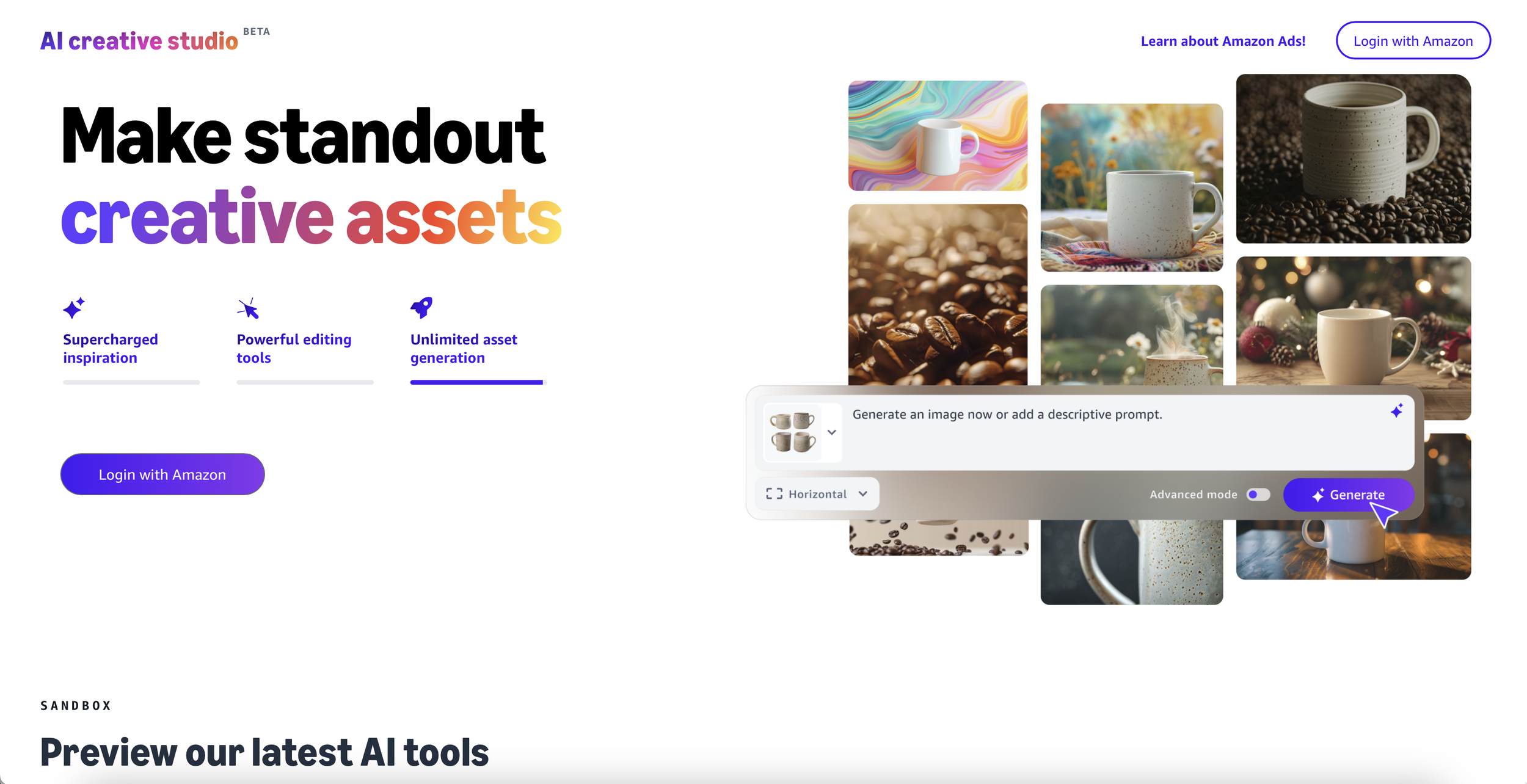How I lead GenAI products
As a UX Design Manager leading Generative AI, I’ve led and shipped over 20 launches in less than 1.5 year.
Role
Design Manager and Lead
Standouts
First-to-market, strong adoption
Company
Amazon Inc.
Year
2023-2025
I create bold visions/tap into new ideas/ balance unpredictable technology with real needs.
(Background video here is generated/prompt driven)
I’ve shipped (and continue shipping) several GenAI tools and features, many of which are first-to-market in its specific industry. Most of these 0 to 1 and 1 to n tools doubled their impact goal within a few months of launch. Ranging from text to generations, to transformations, to editing, I’ve helped launch GenAI capabilities that have shaped how users expect to build creatives.
1st Ads Image Generator
Among several other AI products, my team designed and launched the first Image Generator tool for Amazon Ads, giving advertisers on Amazon unprecedented ability to generate free creatives. Announced in Ads premier conference, this product created strong buzz for its simplicity and capabilities and doubled its goal in just less than a quarter.
Image Generator was a first-in-industry challenge in Ads due to specific requirements to fit Amazon Ad Creatives and ASIN needs. Several unknowns around model, receptivity, and UI needed identification and solutions.
I led the launch, subsequent studies and enhancements into a well established capability with Ads. With a simple and intuitive UI, its adoption far exceeded the goal (+117%), furthering Ads growth across larger advertiser pools.
I built the first UX team in Amazon Ads to support AI tools within the org, scaling impact and collaboration across multiple stakeholders and platforms. Besides several Gen AI tools specific to Ads Console, my team launched the first experimental creative AI tool that allowed anyone build creatives, both image and video, to be directly used in any ad placement.
How to lay foundations for 0-to-1 Gen AI products
New designs and patterns
An existing Design System may not be usable if a new technology such as GenAI has never been accounted for. Recognizing this, I encouraged my team to heuristically determine if existing patterns could be reused → if they needed updating → if new patterns needed to be developed. This led to some very active conversations across org on patterns, particularly on an amorphous area like GenAI.
We ran several workshops and brainstorming sessions to collectively understand which features and ideas within GenAI (for e.g. prompts, loading, outpainting, object replacement, themes, image reference, size transformations, scale, erase etc) needed to be kept open-ended and which could benefit from consistent patterns. This design challenge of innovating while ensuring consistency required regular sync-ups, awareness of market trends and active usability tests.
Update working style
A design team is a conduit between multiple stakeholders, and also benefits from staying close to them. While my team worked very closely with product and tech partners, with Gen AI becoming a central use case, I recognized that UX needs to not only be aware of but work in tandem with scientists.
I established informal (Slack channels) and formal (weekly reviews) mechanisms as well as 1:1 UX/science sync-ups to foster better understanding of the workstreams and also speed up innovation through collaboration. This allowed a holistic work style, where UX learned about models and Science learned how to productize their ideas, thus bringing structure to a rapidly changing space.
Ambiguity and speed
GenAI and its rapid innovation not only meant very quick launch timelines, it also meant models and their possible capabilities, fidelity and outputs varied. Very long term design thinking needed to be balanced with quick, iterative experiments so we learn and evolve.
I started a few team-wide approaches for quick learnings: weekly meet-ups to share and improve the bar of designs, strong awareness of market trends, dedicated usability tests and tests of user perception of GenAI, regular newsletters on creative building. Additionally, discussions centered on levels of transparency, need for user guidance, latency of generation, quality of output vs input effort, consistency in GenAI feature design across tools, progressive highlight of GenAI use (from advanced users to all).
GenAI is a rapidly changing area, and open to several interpretations, while providing immense potential. An exciting area to work on! Reach out to me if you are interested in chatting how design can impact it.






